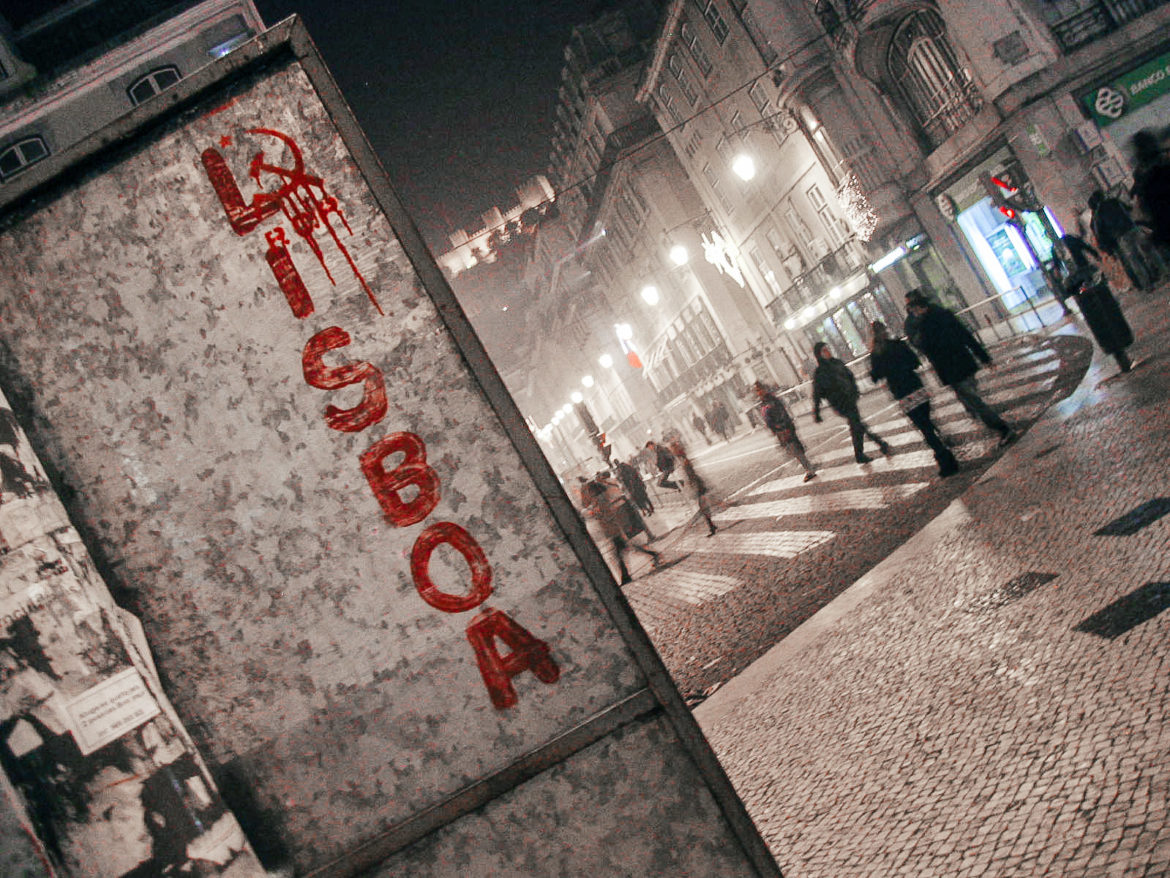From day one, Lisbon charmed us with its raw beauty and unique realness.
Lisbon, the capital of Portugal, marked the first stop of our 7-month backpacking sabbatical through Europe. Our explorations began in true Vasco da Gama style. Outside our hotel, Rua Augusta, a bustling pedestrian walkway, is the center of non-stop action. Café com leites (coffee with milk) by morning turn into evening strolls by night.
In late December, elaborate holiday decorations line the streets and fill the squares. Sparkling lights draw attention to the city’s iconic black and white pavement, found only in Portugal’s cities and former colonies. The intricate swirls and mosaic designs transform humble sidewalks into amazing works of public art.
In the Alfama, the city’s oldest district, we explored narrow, winding streets and promptly got lost.
The Alfama is perfect for wandering aimlessly. The city unfolds all of its subtle details with the painted azulejos (ceramic tiles) that grace fountains and the crumbling facades of centuries-old buildings. Buildings that, despite the devastating earthquake of 1755, are still standing to this day.
One of the highlights of a Lisbon visit is riding the pre-war electricos (trams). Whirring through the city, we weaved in and out of traffic like a video game. Pedestrians scampered out of the way. We watched with surprise (and trepidation) as giggling school kids hopped on the moving tram. Clearly, it wasn’t their first time hitching a free ride.
Castelo de Sao Jorge is the site of an old Moorish palace. Here, we soaked up the essence of Lisbon’s everyday life. Retired men playing cards. Young couples cozying up on benches. Kids getting a thrill chasing after pigeons. Meandering the grounds, we stumbled on one of Lisbon’s many spectacular miradouros (viewpoints.)
A few miles outside the city lies picturesque Belem, an easy day trip from Lisbon.
Belem is a charming port town where we learned about Manueline architecture, a late Gothic style influenced by the infamous Portuguese voyages. The designs incorporate nautical elements like ships, the sea and newly discovered lands. After strolling the peaceful cloisters of Jeronimos Monastery, we headed to Belem Tower. Every night, locals gather to watch the sunset over the water. Nearby, the impressive Monument to the Discoveries features over 30 massive statues of explorers, crusaders and mapmakers. It serves as a reminder that this small country was once the leader in world exploration.
On New Year’s Eve, we enjoyed a particularly magical evening in Lisbon. We headed to an authentic Fado performance at A Baiuca, a hole-in-the-wall restaurant in the heart of the Alfama.
Fado is Portugal’s most famous music genre. Sad, soulful and achingly beautiful.
Listening to Fado is like going on a journey. Sung by ordinary folks, the lyrics speak to the struggles and joys of life. You don’t have to know Portuguese to understand what the singers are trying to convey. The melancholy sound, expressive style and unique ambience was the ideal way to wrap up our visit.
Lisbon is an enchanting place. We love it even more because it kicked off our seven-month adventure abroad. In just one week, we had experienced so many wonderful people, places and things we never knew existed. Best of all, it was just the beginning.
Lodging: Hotel Internacional / Couchsurfing | Food: A Baiuca, Mercado da Ribeira, Adega Triunfo, Ristorante Valentino | Activities: The Alfama, Castelo de Sao Jorge, Belem, Jeronimos Monastery, Belem Tower, Monument to the Discoveries

